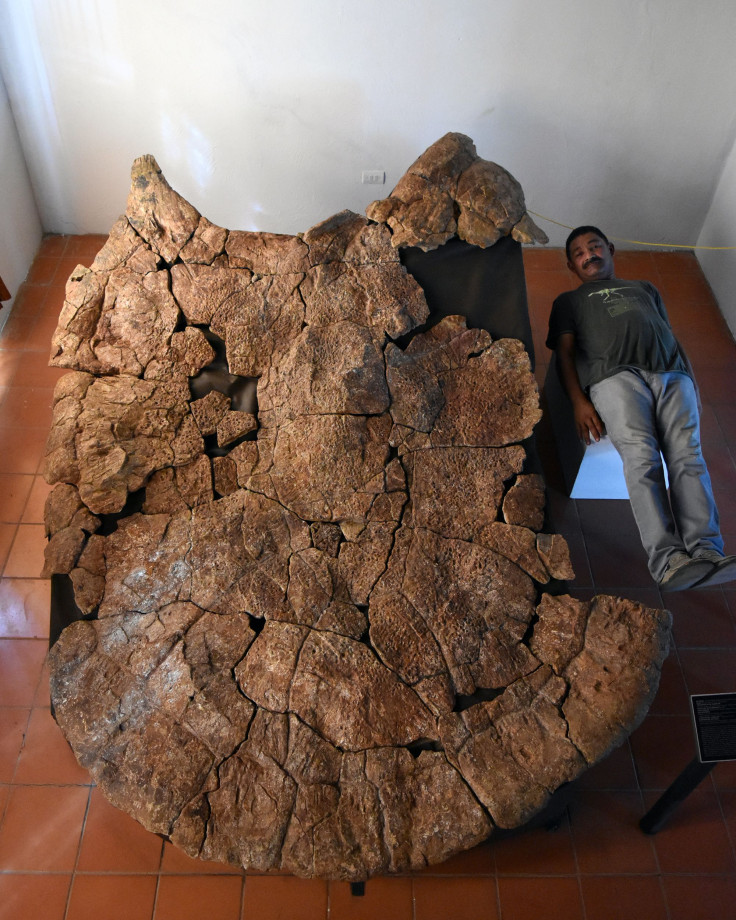Paleontologists Unearth Remains Of Car-Sized Prehistoric Turtle With Battle-Ready Features

KEY POINTS
- Paleontologists discovered the remains of a giant prehistoric turtle
- The prehistoric turtle had features it used to defend itself
- The Stupendemys could be the largest turtle that ever existed
Paleontologists from South America unearthed the fossils of a prehistoric turtle that was as big as a car. The scientists noted that the extinct animal was capable of battling against other large predators due to its unique features.
The discovered fossils belonged to a species of freshwater turtle known as Stupendemys geographicus. According to the researchers, this animal thrived during the Miocene epoch, a period that lasted 12 to 5 million years ago. It inhabited the systems of rivers and lakes in South America.
The paleontologists came across the remains of the extinct beast in the Tatacoa Desert in Colombia and the Urumaco region in Venezuela. The fossils mainly composed of shells that are about 3 meters long, making the animal as big as a standard sedan car.
Based on the size of the shells, the researchers estimated that the Stupendemys geographicus weighed about 1,145 kilograms. This means it’s 100 times bigger than the Amazon river turtle, which is its closest living relative.
According to Marcelo Sanchez, the director of the Paleontological Institute and Museum of the University of Zurich, the Stupendemys geographicus could be the largest turtle that walked the Earth.
“The carapace of some Stupendemys individuals reached almost three meters, making it one of the largest, if not the largest turtle that ever existed,” he said in a statement.
Through the fossils, the paleontologists discovered that the Stupendemys geographicus had unique physical features that made it a formidable predator during the Miocene epoch. Aside from their massive size, the male turtles had front-facing horns lining the sides of their shells.
Traces of scars on the horns suggested that the Stupendemys geographicus may have used these features to defend itself against other turtles or large predators, such as the giant crocodiles that inhabited its natural habitat.
Aside from serving as a defense mechanism, the paleontologist noted that the male Stupendemys geographicus may have used its horns to attract potential mates since the females did not have this feature on their shells.
“The two shell types indicate that two sexes of Stupendemys existed – males with horned shells, and females with hornless shells,” Sanchez explained.
The findings of the paleontologists regarding the Stupendemys geographicus were presented in a new study published in Science Advances.
© Copyright IBTimes 2024. All rights reserved.





















